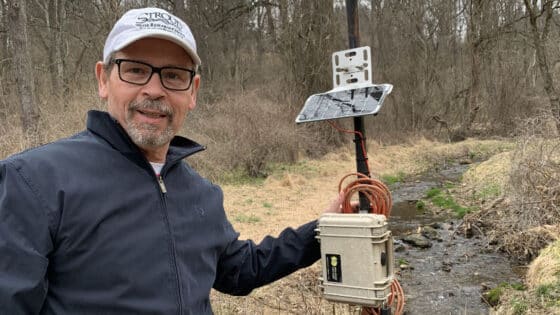Arscott, D.B., R. Glatthaar, K. Tockner, J.V. Ward. 2002. Verhandlungen Internationale Vereinigung Limnologie 28:524–531.
Persistent URL: https://www.dora.lib4ri.ch/eawag/islandora/object/eawag:4502
Abstract
Spatial and temporal variations of black fly (Diptera: Simuliidae) abundance, distribution, and diversity along the Tagliamento River (northeastern Italy) were investigated over one year (May 1998 to March 1999). A total of 2250 simuliids was collected from quantitative and qualitative samples (n = 110). At the family level, only Chironomidae (35,500 ind.), Baetidae (9,150 ind.), and Leuctridae (3,050 ind.) were more abundant. Ten species of simuliids were identified. Total black fly abundance was highly variable among sites and dates. Peak densities were greatest in August corresponding with yearly maximum temperatures and the summer period of relatively stable water levels. Lowest densities occurred in November following a period of high water. Prosimulium rufipes and Simulium variegatum were restricted to headwater reaches above 700 m a.s.l. Simulium argyreatum overlapped with these two species but extended further downstream (ca. 150 m a.s.l.), while S. ornatum, S. lineatum, S. cryophilum, and S. aureum (Group) were primarily restricted to the lowland sites a ca. 20 m a.s.l. Simulium reptans occurred along the entire longitudinal continuum but peaked in abundance in mid reaches. The distribution of larval black fly species was explained by several environmental variables but velocity, temperature, depth, TDN, and substrate size were the strongest correlates and explained the greatest variance in the data metrics. In general, flood disturbance in the Tagliamento probably limits species diversity and restricts main channel communities to disturbance-resistant/resilient species such as Chironomidae, Baetidae, and Simuliidae or selects for smaller animals capable of taking refuge in interstices (i.e., Copepoda, Oligochaeta, and Leuctridae). Although flood disturbance may have an overriding influence on biological processes, such as invertebrate production or life history patterns, other environmental variables are important filters of the species pool (e.g., substrate flow, flow conditions, temperature).


